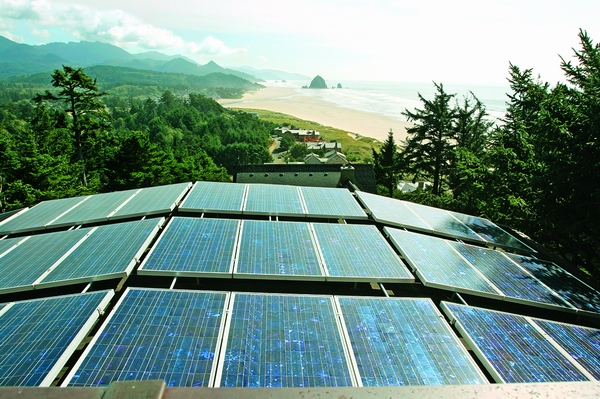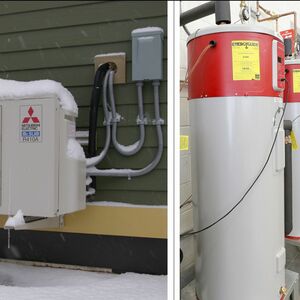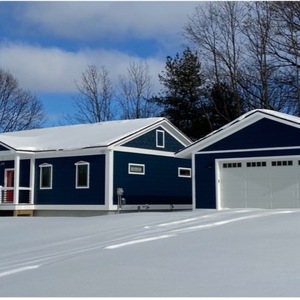
A recent items posted by The Daily Camera, which serves the Boulder, Colorado, area, homed in on the tribulations of a homeowner in the city whose ambition to make his house greener became sidetracked by a key strategic error.
The mistake, which boiled down to the hiring of a contractor who had very little experience with (and apparently no training for) solar power installations, and its consequences serve as an object lesson for prospective PV-system customers.
As The Daily Camera notes, the homeowner, Thomas David Kehoe, was philosophically predisposed to reduce his carbon footprint by making his 1961 tract house as green as possible. A renewable-energy source – a 2,000-watt solar power system – would be the capstone to his quest.
Kehoe did receive a $9,000 rebate on the system, which cost $24,130.15 to purchase and install, from local utility Xcel Energy. He also received a $2,000 federal tax rebate. But he also has had to reckon with a list of problems that could and should have been avoided:
1. underperformance of the system, due largely to the fact that the panels were not located in a spot that maximized solar exposure
2. incompatibility between the system and the wiring in the home, which Kehoe later had to retrofit for solar at a cost of $1,200
3. lack of adequate roof support to offset the wind-shear potential of the panels; about $4,000 was spent on roof reinforcement
4. improper placement of the system’s central inverter, the device that converts direct-current electricity from the panels to alternating current for use in the house. The contractor installed the inverter near Kehoe’s bedroom, which exposes the room to unsafe levels of electromagnetic radiation, he says.
Kehoe told the Camera he is in the process of relocating the inverter and repositioning the panels for optimal performance.
In many parts of the country, the practical, ecological, and financial incentives for going solar continue to grow – albeit at a slower pace than energy-independence advocates would like. Kehoe had his solar electricity system installed in February 2007. Expanded listings posted by industry groups have since made it a bit easier to find an installer with experience and a fair price per installed kilowatt.
The American Solar Energy Society website, for example, offers an extensive list of installers and a ZIP Code-based search tool. The ASES site also features a few state-specific lists, including one for Colorado.
Weekly Newsletter
Get building science and energy efficiency advice, plus special offers, in your inbox.














7 Comments
Too Many Gadgets
This story would benefit from some additional information. Was the building envelope improved as part of the project? 24k would go a long ways towards superinsulation or PH. As I like to say "the envelope please", this is where energy efficiency starts. The net zero energy homes of late suffered from average thermal standards and a dearth of very expensive gadjets to try and make it right. Simplicity is a beautiful thing in home design and perfomance as part of a comprehensive building analysis should be the foundation for any new or retrofit project.
Meant to say no dearth of
Meant to say no dearth of expensive gadjets.
The envelope
Before I had the solar PV project installed I did everything to reduce energy usage. That included insulating the attic and basement crawlspace (the walls were already insulated), replacing the windows, replacing the back door, installing T-8 high-speed electronic fluorescent lights, and painting the roof and interior walls white. I also bought a new, more efficient refrigerator and washer, and got rid of the dryer and installed four clotheslines (three outside, one inside). The clotheslines probably save more electricity than the solar panels produce. I didn't replace the 25-year-old gas furnace because we don't use it much. My 1961 tract house doesn't have many of features of recent houses, but it has simplicity in abundance! The $24,000 figure is what the contractor billed me for, including $4,000 overbilling (we'd agreed in writing that the roof reinforcement would be free, then he sent me a bill for a roof reinforcement). After all the rebates, etc., my out of pocket was $5,000, which is a lousy investment for $175 of electricity a year, but probably a similar return compared to other things I could do to improve the envelope, such as a new furnace or replacing the insulation in the walls.
Thanks for the update
Thomas, I appreciate the additional information on your project, sounds like you have made the right energy moves.
minor correction
2,000 kW of Solar!! Wow! That's 2 Megawatts!
Obviously, I think you meant 2000 Watts.
I've made that typo many times myself-- and at least it wasn't the much more common 2 "kW per hour"
re: 2,000 kW
Good catch! And thanks for the comment.
cost
That is pretty expensive on a $'s per watt basis, unless you also have battery backup. I have found $8 to $9 per watt achievable for grid tied systems. The problems with your installation are all too common. Most of my PV work is fixing systems that have been installed improperly by others, often electricians and permitted and inspected systems. What I see most often is inadequate wire sizing and improper grounding, often resulting in not only under-performance but also dangerous situations.
Log in or create an account to post a comment.
Sign up Log in